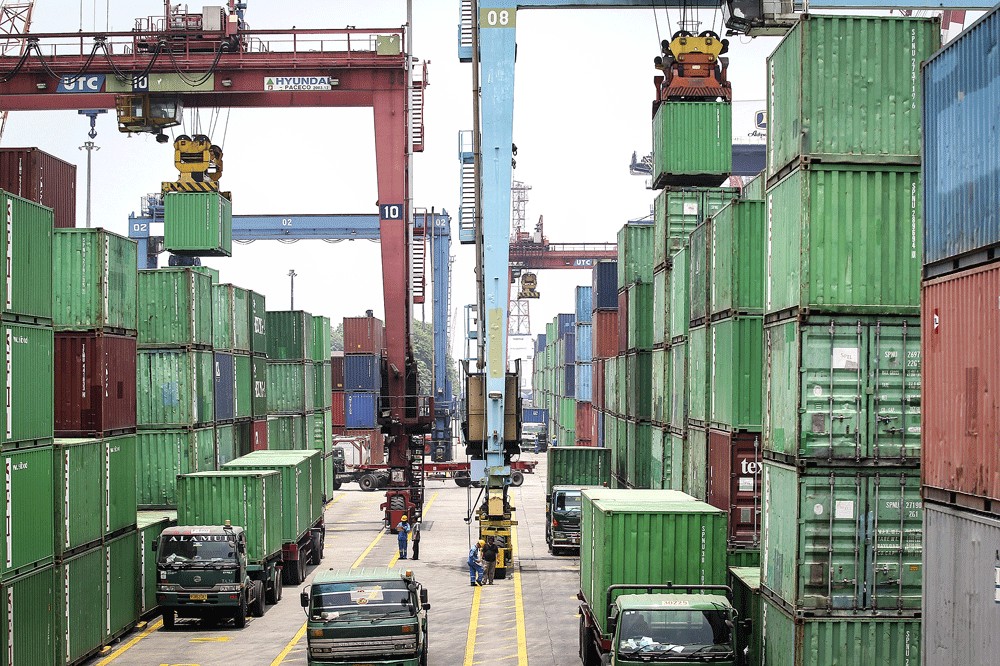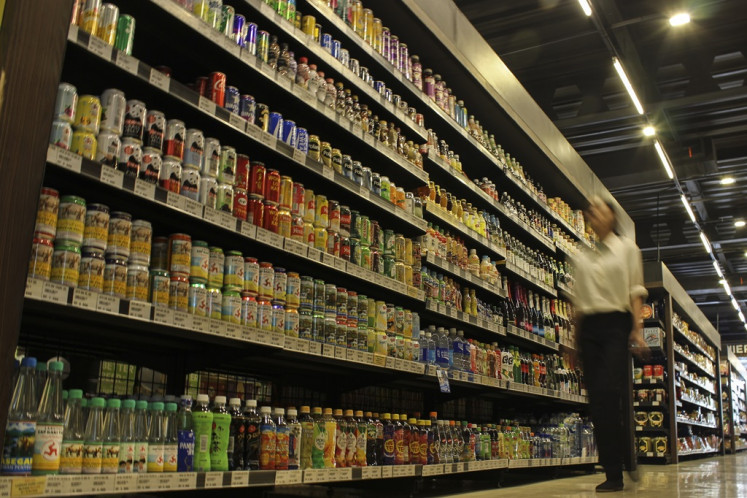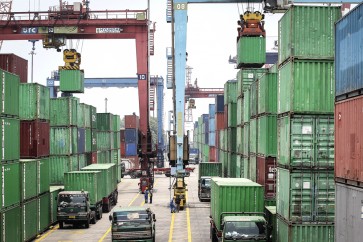Popular Reads
Top Results
Can't find what you're looking for?
View all search resultsPopular Reads
Top Results
Can't find what you're looking for?
View all search resultsThe recent trade surplus and its sustainability
The performance of Indonesia’s trade, which had been deteriorating since the beginning of last year, seems to have shown a glint of positive signals in the past two months.
Change text size
Gift Premium Articles
to Anyone
T
he performance of Indonesia’s trade, which had been deteriorating since the beginning of last year, seems to have shown a glint of positive signals in the past two months. Indonesia’s balance of trade in March recorded a surplus of US$540 million, marking the second consecutive month of trade surpluses this year. The March surplus was even higher than the $330 million surplus recorded in February, which may indicate an improvement in Indonesia’s trade performance this year.
Besides its higher value, the surplus in March also had different characteristics from that in February. Whereas the surplus in February mainly resulted from a plunge in imports, the March surplus was driven by a significant increase in exports. It is true that exports in March still decreased by 10 percent compared to the same month last year, just as occurred in January and February this year. On a month-to-month basis, nonetheless, exports grew 11.7 percent, demonstrating a turnaround from a persistent slowdown in the last eight months. This was the best achievement since July 2018.
The soaring exports in March were driven by an increase in the non-oil and gas sector, particularly mineral fuel (24.2 percent) and ore, slag and ash (110.4 percent). China was the largest contributor to the rising exports as Indonesia’s exports to China grew 28.5 percent, a lot stronger than growth of exports to other major trading partners such as Japan, the United States, the European Union and India. China’s demand for Indonesian coal, for example, has increased since the beginning of this year, partly thanks to that country’s recent resistance against Australian thermal coal. China seems to defy expectations of an economic deceleration, as it saw an unexpected 26.6 percent month-to-month increase in imports in March this year.
Another positive signal is that imports of raw materials and auxiliary goods in March increased 12.34 percent on a month-to-month basis, indicating improved domestic production. This trend is in line with an improvement in the purchasing managers’ index of the Indonesian manufacturing sector in last three months, which indicates a further expansion of domestic manufacturing activities.
This recent trend may look promising for Indonesia. However, the positive signals do not seem to be strong enough for a number of reasons. First, the global economic slowdown does not look like it will cease anytime soon. The International Monetary Fund has recently become less optimistic as the multilateral agency recently revised down its outlook on global economic growth for this year from 3.5 to 3.3 percent. The US and China may be moving closer to reaching a deal to end the trade war, but another trade war initiated by the US against the EU may sustain global uncertainties.
Second, Indonesia’s recent positive export performance was largely a result of a 31 percent increase in exports from the mining sector (month to month), whose prices will probably remain volatile this year. The increased coal exports to China, for example, was partly driven by an expected Chinese ban on Australian thermal coal, leading to increased coal demand — and prices — for coal from other main suppliers including Indonesia.
Average international coal prices in March actually declined from around $650/one million British Thermal Units (MMBtu) last May to only $530.10/MMBtu on average in March 2019. Similarly, the prices of other Indonesian leading commodities such as palm oil and rubber are also expected to weaken further. Meanwhile manufacturing exports only grew 9.5 percent in March, far below the mining export growth.


















